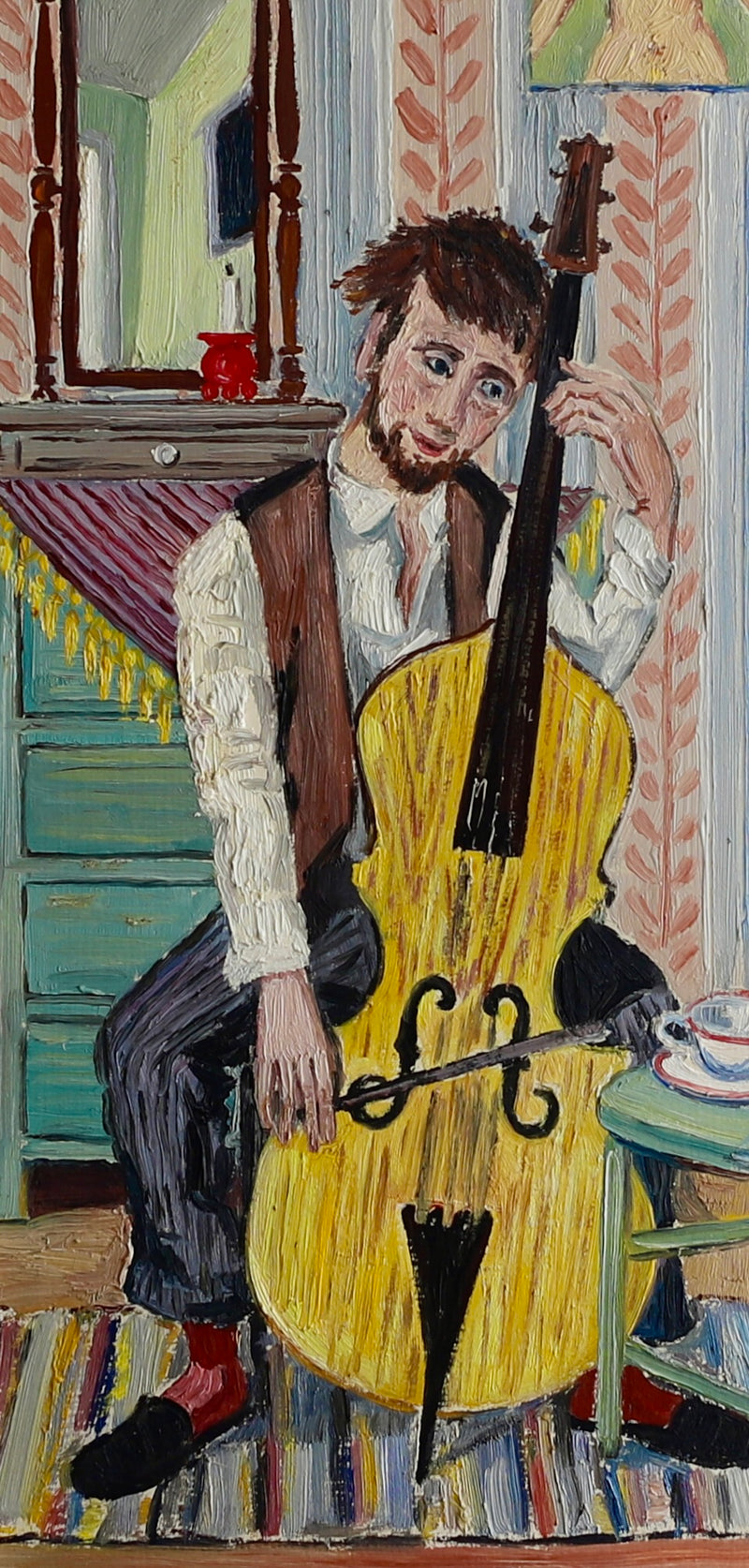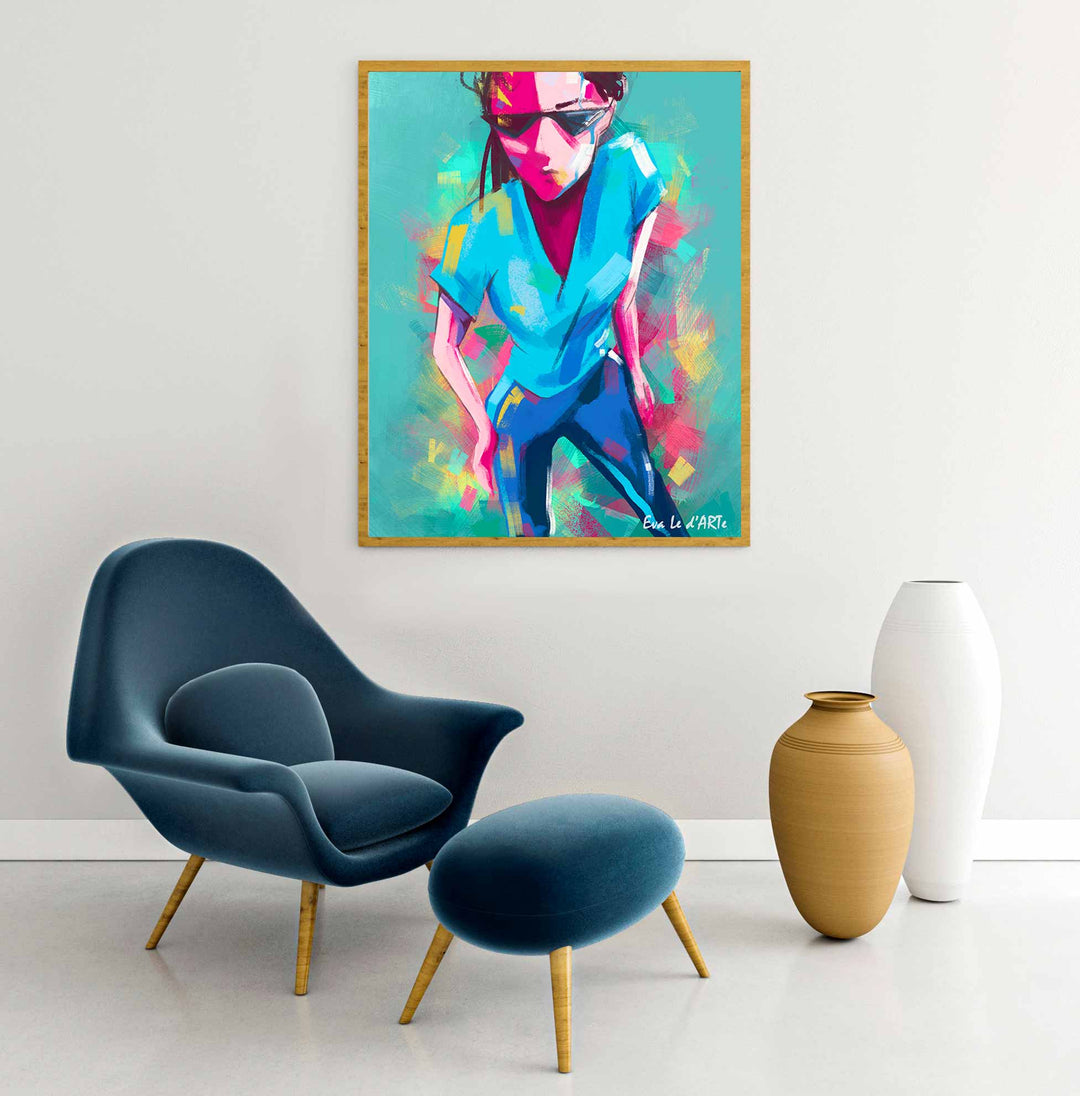Figurative Oil Painting: From Concept to Canvas - A Step-by-Step Strategy
Wiki Article
The Function of Feeling and Expression in Figurative Oil Paint: An In-Depth Analysis of Topic and Composition
The interaction of feeling and expression in metaphorical oil paint functions as a vital lens where one can check out the detailed connection between topic and structure. Artists harness various strategies, from color choice to brushstroke dynamics, to cultivate psychological resonance within their works. This nuanced orchestration not just forms customer perception however additionally welcomes a deeper inquiry into how these elements coalesce to reflect the complexities of human experience. As we explore this abundant surface, one need to consider exactly how certain instance studies brighten the more comprehensive ramifications of these creative choices.Recognizing Emotion in Art
Feeling in art serves as a powerful conduit for expression, allowing artists to convey complex sensations via their job. In figurative oil painting, this psychological deepness is frequently represented with the representation of the human number, catching the nuances of human experience. The selection of topic, shade combination, and brushwork all add to the emotional resonance of an item.Artists regularly draw upon individual experiences, social issues, or universal styles to evoke feelings in the customer. A picture may show susceptability, while a dynamic number in activity can signify flexibility or chaos. These emotional threads connect the customer to the art work, promoting a discussion that transcends the aesthetic medium.
Moreover, the interplay between light and darkness can magnify emotional intensity, guiding the viewer's look and accentuating certain elements within the structure. Making use of texture in oil painting additionally adds layers of complexity, inviting a tactile reaction that improves the psychological experience. In general, understanding emotion in art is crucial for appreciating the nuances that identify metaphorical oil paint, as it changes plain representation into an extensive expedition of the human problem.
Crucial Element of Make-up
In the world of figurative oil painting, the structure works as the underlying structure that arranges aesthetic elements and boosts the emotional story. Essential components of structure include equilibrium, comparison, focal factor, and rhythm, each adding to the total effect of the art work.Equilibrium refers to the distribution of aesthetic weight within the paint, which can be achieved via symmetrical or unbalanced plans. A healthy composition provides security, enabling the audience to engage with the piece harmoniously - figurative oil painting. Comparison, on the other hand, involves comparing various aspects, such as dark and light or warm and great colors, to assist the audience's eye and stimulate psychological reactions
The focal point is important, as it routes interest to one of the most substantial part of the painting, frequently highlighting the emotional core of the narrative. With strategies like shade saturation or placement, artists can highlight this area efficiently. Rhythm pertains to the repetition of aspects, creating a sense of movement and circulation throughout the composition. By skillfully integrating these crucial elements, musicians can craft engaging and mentally resonant figurative oil paints that astound and involve their target market.
Subject and Its Influence
Subject plays a critical role in metaphorical oil paint, as it not only acts as the structure for the story but also forms the audience's interpretation and emotional engagement with the artwork. The selection of subject-- be pop over here it a singular figure, a group dynamic, or a thematic representation-- straight affects the emotional ambience communicated to the target market.
As an example, portraits often stimulate personal links, exposing the complexities of human expression and personality, while scenes depicting common tasks can create a feeling of belonging or nostalgia. The historical and cultural context of the subject issue improves the customer's understanding, triggering deeper reflections on societal norms, worths, and the human problem.
Various subject matters also produce differing levels of engagement; a dramatic dispute illustrated through numbers in tension may generate sensations of stress and anxiety or compassion, while tranquil landscapes can invoke harmony and contemplation. Inevitably, the influence of subject issue in figurative oil paint is extensive, as it functions as an avenue for emotional vibration, leading the visitor's response and interpretation, and promoting a connection between the viewer and the art work. This interaction is vital for the successful communication of the musician's intent.
Methods for Evoking Feelings
The efficiency of metaphorical oil paint in communicating feelings is dramatically affected by the techniques used by the musician. One of the most crucial methods is the usage of color theory, where the calculated choice of hues can stimulate specific emotional feedbacks. Warm shades, such as oranges and reds, often evoke sensations of interest or hostility, while cooler tones like blues and greens tend to stimulate peace or unhappiness.One more vital technique is the visit this site right here adjustment of light and darkness, referred to as chiaroscuro. This method enhances the three-dimensionality of numbers, producing remarkable contrasts that can escalate psychological depth. The placement of light can guide visitors' feelings, highlighting particular elements of the make-up.
Brushwork additionally plays a vital role; loose, meaningful strokes can communicate energy and spontaneity, whereas smoother techniques may recommend peace or accuracy. Additionally, the plan of topics within the make-up can influence emotional influence. Close closeness can suggest intimacy, while distance might suggest seclusion.
Inevitably, the mix of these techniques allows artists to craft narratives that resonate with the viewer, changing a mere aesthetic experience right into an evocative emotional trip. - figurative oil painting

Situation Research Studies of Significant Functions
Analyzing notable jobs of metaphorical oil painting reveals how numerous methods are used to stimulate effective emotions. One exemplary situation is Edvard Munch's "The Scream," where the distorted figure and swirling background convey existential fear. Munch's usage of color-- dazzling oranges and deep blues-- intensifies the psychological influence, showcasing how scheme choices can shape audience experience.One more considerable job is Pablo Picasso's "Les Demoiselles d'Avignon." Here, fragmented forms and bold brushstrokes show a troubled emotional landscape, testing conventional representations of the women number. Picasso's innovative structure not just records the visitor's attention but also invites contemplation on motifs of identification and sexuality.
In Addition, Frida Kahlo's "The 2 Fridas" provides an emotional expedition of duality and self-identity. The different numbers, linked by a common heart, exhibit Kahlo's psychological deepness and personal story. figurative oil painting. Her careful attention to detail and symbolic aspects serve to involve audiences on a natural level
These instance research studies emphasize the profound connection between feeling and composition in metaphorical oil paint, exposing how musicians harness technique to connect intricate sensations and narratives that resonate throughout time and culture.

Verdict
In final thought, the interplay of feeling and expression in figurative oil paint substantially improves the customer's experience and interpretation of the art work. With a mindful option of subject and compositional techniques, musicians communicate extensive stories that reverberate on both universal and individual degrees. The application of color theory, chiaroscuro, and brushwork additional amplifies psychological depth, changing each canvas into a powerful reflection of the complexities of the human experience.In figurative oil paint, this psychological depth is typically portrayed via the depiction of the human number, recording the subtleties of human experience.Moreover, the interaction between light and shadow can enhance emotional strength, guiding the customer's gaze and drawing focus to certain elements within the structure. The usage of structure in oil painting additionally adds layers of intricacy, inviting a responsive action that improves the emotional experience.The focal factor is critical, as it guides attention to the most considerable component of the painting, frequently highlighting the emotional core of the narrative. Ultimately, the effect of subject matter in figurative oil paint is profound, as it offers as a channel for emotional vibration, leading the viewer's response important link and interpretation, and fostering a link between the onlooker and the art work.
Report this wiki page